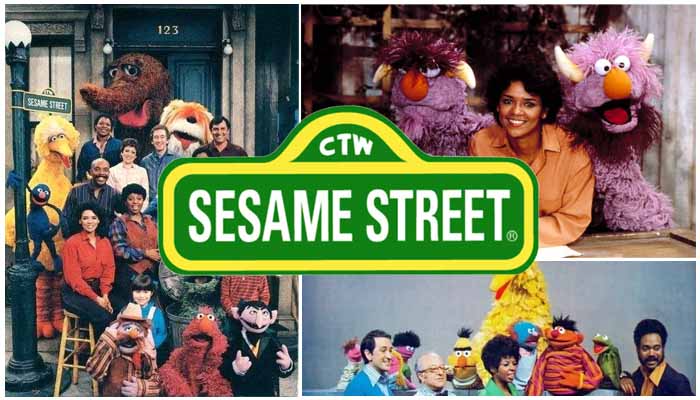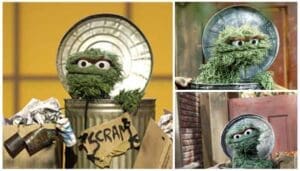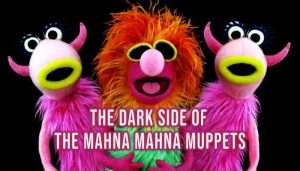The late 1960s in America were a time of profound social change, marked by a growing national consciousness of inequalities that permeated society. Amidst the fervor of the Civil Rights movement and President Johnson’s ambitious War on Poverty, a groundbreaking idea began to take shape – could the pervasive power of television, a medium then captivating the nation, be harnessed for something more than just entertainment? Could it become a tool for education, particularly for the most vulnerable members of society: young children facing the disadvantages of poverty and racial discrimination? This was the question that sparked the creation of Sesame Street, a show that would not only revolutionize children’s television but also leave an indelible mark on early childhood education .
The genesis of this revolutionary program can be traced back to a seemingly ordinary dinner party in 1966. Television producer Joan Ganz Cooney hosted Lloyd Morrisett, a psychologist and Vice President at the Carnegie Foundation . Morrisett, observing his young daughter’s fascination with television commercials and their catchy tunes, wondered if the same captivating techniques could be applied to teaching children fundamental skills . Cooney, with her background in television, immediately grasped the potential. They envisioned a show that could “master the addictive qualities of television and do something good with them,” particularly in preparing young children for school . This simple yet profound idea laid the foundation for what would become a global phenomenon.
The core motivation behind Sesame Street was a deep-seated concern for the educational disadvantages faced by children from low-income and minority backgrounds . Research at the time indicated that these children often started school significantly behind their more affluent peers, a gap that tended to widen as they progressed through their education . The creators aimed to “level the playing field” by providing these children with access to high-quality early learning experiences through the readily accessible medium of television, focusing on crucial school readiness skills like literacy and numeracy . While the initial vision specifically targeted a “4-year-old, inner-city, black youngster” , Cooney and the team understood that to achieve widespread success and maximize its impact, the show needed to resonate with children of all socioeconomic and ethnic backgrounds . This dual focus on addressing specific needs while maintaining universal appeal became a key strategy in Sesame Street’s early development.
The creation of Sesame Street was spearheaded by a remarkable team of pioneers, each bringing unique expertise and passion to the project. At the helm was Joan Ganz Cooney, a visionary television producer with a background in public affairs . Her groundbreaking 1967 report, “The Potential Uses of Television in Preschool Education,” laid the intellectual groundwork for the show’s educational philosophy and engaging format . In 1968, Cooney co-founded the Children’s Television Workshop (CTW), later known as Sesame Workshop, and served as its first executive director, guiding the show’s development from its initial concept to its premiere .
Partnering with Cooney was Lloyd Morrisett, the Carnegie Corporation Vice President whose initial question sparked the entire endeavor . Often called Sesame Street’s “financial godfather,” Morrisett was instrumental in securing the crucial initial funding for the project . His background in experimental psychology also provided a valuable understanding of child development, informing the show’s educational approach . Together, Cooney and Morrisett co-founded the CTW , with Morrisett serving as the chairman of its board for three decades .
The magic of Sesame Street was brought to life by Jim Henson, the visionary creator of the Muppets . Initially hesitant to work on a children’s show, Henson was ultimately persuaded by the program’s social goals and the opportunity to reach and educate young audiences . He and his team created the iconic Muppet characters that became the heart and soul of Sesame Street, including Big Bird, Oscar the Grouch, Bert, Ernie, Cookie Monster, and Grover .
Beyond this core trio, several other individuals played crucial roles in shaping Sesame Street’s early years. Jon Stone, an experienced writer and director, was responsible for the show’s writing, casting, and overall format, considered a key creative force behind its success . Gerald S. Lesser, as chair of the CTW’s first advisory board, provided expert guidance on the educational curriculum . And Joe Raposo composed the unforgettable theme song and many other beloved tunes that became synonymous with the show . The collective talent and dedication of this “genius” team were fundamental to the creation and early success of Sesame Street .
| Individual | Role | Primary Contributions |
|---|---|---|
| Joan Ganz Cooney | Co-Creator, Executive Director of CTW | Conceived the idea, wrote the foundational report, secured initial funding, led the development and production of the show. |
| Lloyd Morrisett | Co-Creator, VP of Carnegie Corporation | Inspired the initial idea, secured significant early funding, provided insights into child development. |
| Jim Henson | Creator of the Muppets | Created the iconic Muppet characters that were central to the show’s appeal and educational effectiveness. |
| Jon Stone | Writer, Director, Producer | Shaped the writing, casting, and format of the show, considered a key creative force. |
| Gerald S. Lesser | Chair of CTW Advisory Board | Guided the development of the educational curriculum and documented the show’s early years. |
| Joe Raposo | Composer | Created the memorable theme song and other music for the show. |
Sesame Street was groundbreaking not only in its goals but also in its approach to achieving them. It was the first children’s television show to be built upon a detailed and comprehensive educational curriculum with specific learning objectives . This curriculum was the result of a collaborative effort between television producers, writers, educators, and researchers, a unique system known as the “CTW Model” . From its inception, the show’s educational effectiveness was rigorously studied, with both formative research conducted during development and summative evaluations after its premiere . This commitment to a research-driven approach set Sesame Street apart and contributed significantly to its lasting impact.
The initial curriculum focused on both cognitive and affective goals, though the primary emphasis was on cognitive skills aimed at preparing preschool children for school . These included teaching the alphabet, numbers, vocabulary, shapes, and basic reasoning skills, with a particular focus on addressing the educational disadvantages faced by children from low-income families . While initially addressed indirectly, the show also aimed to foster social competence, tolerance of diversity, and non-aggressive conflict resolution . The curriculum for the early seasons was developed through a series of seminars in 1968, bringing together the show’s creative team with experts in education and child development . This collaborative process ensured that the educational content was both age-appropriate and grounded in established theories of learning .
Recognizing the importance of capturing and sustaining the attention of young viewers, Sesame Street employed a variety of engaging teaching techniques inspired by the world of commercial television . These included modeling desired behaviors, using repetition to reinforce new concepts, and strategically incorporating humor to make learning enjoyable and to encourage co-viewing with parents . The creators understood the need to make the educational content salient and easy for children to grasp, focusing their attention on key learning objectives . The deliberate use of repetition, a common technique in advertising, provided young children with the opportunities to practice new skills and make connections between familiar and unfamiliar ideas .
A cornerstone of Sesame Street’s enduring appeal is undoubtedly its cast of Muppet characters, brought to life by the extraordinary talent of Jim Henson and his team . Henson, despite initial reservations about working in children’s television, was ultimately drawn to the show’s social mission and the potential to use his puppetry for educational good . His genius lay in creating Muppets with distinct personalities, quirks, and relatable emotions, transforming them into beloved figures for generations of children .
The initial Muppet ensemble included characters designed to serve specific educational and social-emotional purposes. Big Bird, a large and curious bird, was created to embody the perspective and learning experiences of a young child . Oscar the Grouch provided a humorous outlet for negative emotions, showing children that it’s okay to feel grumpy sometimes . The comedic duo of Bert and Ernie were designed to navigate various learning situations through their contrasting personalities . Cookie Monster, initially conceived for a commercial, found his niche on Sesame Street, later evolving to also teach about healthy eating . Grover, originally nameless and green, became the lovable blue monster known for his enthusiastic but often clumsy attempts to help .
Interestingly, the initial plan was to keep the human actors and Muppets separate in the “street scenes,” based on advice from child psychologists who feared interaction might confuse young viewers . However, test screenings revealed that children were far more engaged during the Muppet segments . Recognizing this, the producers made a crucial decision to disregard the initial advice and specifically asked Henson to create Muppets like Big Bird and Oscar to interact directly with the human cast . This integration of Muppets and humans became a defining characteristic of Sesame Street and a key factor in its widespread appeal and educational effectiveness.
Sesame Street revolutionized children’s television not only in its content but also in its very format. It deliberately adopted production techniques common in commercial television, such as music, humor, fast-paced action, and a visually engaging style . Co-creator Joan Ganz Cooney proposed using short, commercial-like segments that would repeatedly present key educational concepts . The show also incorporated animation and live-action short films to further capture children’s attention and present information in diverse ways .
Early episodes of Sesame Street followed a “magazine format,” presenting a diverse collection of segments within each hour-long show . This structure allowed for a variety of styles, paces, and characters, catering to young children’s presumed shorter attention spans and providing flexibility for the producers to adapt content as needed . The show uniquely blended “street scenes,” depicting interactions between the human and Muppet residents of Sesame Street on a realistic urban set , with “inserts” of puppet skits, short films, and animations that often focused on specific educational objectives . Initially, the street scenes were more about character-driven interactions and curriculum-based segments rather than ongoing narratives .
The creation of such an ambitious and innovative program required significant financial backing. Sesame Street secured crucial early funding from a combination of philanthropic organizations and the U.S. government. The Carnegie Corporation provided foundational support, including a $1 million grant in 1968 to establish the Children’s Television Workshop . The Ford Foundation also played a vital role, contributing $1 million in 1969 to help launch the show .
The U.S. Office of Education also provided substantial early funding, with a pledge of $4 million representing half of the initial budget . Sesame Street premiered on public television stations (NET, later PBS), aligning with its mission to serve the public interest . The Corporation for Public Broadcasting also contributed to the initial financial support . The initial budget for Sesame Street was approximately $8 million , a considerable investment reflecting the creators’ commitment to high-quality production that could compete with commercial television and effectively engage young viewers . Over time, the show’s funding model shifted towards greater self-sufficiency through licensing, international sales, and other media ventures .
| Funding Source | Approximate Amount |
|---|---|
| Carnegie Corporation | $2 million |
| Ford Foundation | $1 million |
| U.S. Office of Education | $4 million |
| Corporation for Public Broadcasting | (Significant) |
Sesame Street premiered on November 10, 1969, and was met with immediate acclaim and high ratings . It quickly became a cultural touchstone, embraced by children and parents alike . By its tenth anniversary, millions of children were tuning in daily , and surveys indicated that the vast majority of preschoolers had watched the show by a young age .
Research soon confirmed the show’s positive impact on children’s education. Studies demonstrated improvements in cognitive skills, school readiness, and academic performance among young viewers . Preschoolers who watched Sesame Street showed higher test scores in areas like literacy, math, and vocabulary , and teachers reported that these children were often better adjusted to the school environment . Notably, the show proved particularly effective in benefiting children from disadvantaged backgrounds, fulfilling a core element of its mission .
Sesame Street’s influence extended beyond the classroom, revolutionizing the landscape of children’s television programming . It established new standards for educational content and production quality, demonstrating that learning could be engaging and entertaining . The show’s success inspired other producers to adopt more innovative and visually appealing approaches to children’s programming . Even executives at commercial networks acknowledged Sesame Street’s positive impact on the industry . Despite its widespread success, the show did face some initial controversies, including concerns about its fast pace and, notably, resistance to its racially diverse cast in some regions .
The early days of Sesame Street were filled with interesting moments behind the scenes. Many of the beloved Muppets looked quite different in their initial designs; Cookie Monster was once known as the “Wheel Stealer,” and Oscar the Grouch was originally orange . The show almost had a different title, “123 Avenue B,” and one of its creators wasn’t a fan of the iconic theme song’s lyrics . In a surprising anecdote, the performer for Big Bird narrowly missed being on the Space Shuttle Challenger mission . The show’s storylines often drew inspiration from real life, such as the way it sensitively addressed the death of Mr. Hooper . Even the voice of Oscar the Grouch was inspired by a real-life encounter with a taxi driver .
In conclusion, the early creation of Sesame Street was a remarkable and transformative endeavor. Born from a desire to address educational inequities and fueled by the innovative spirit of a dedicated team, the show revolutionized children’s television and left an enduring legacy on early childhood education. Its commitment to research-driven content, engaging presentation, and inclusive vision continues to resonate, making Sesame Street a timeless and cherished part of our cultural landscape.



